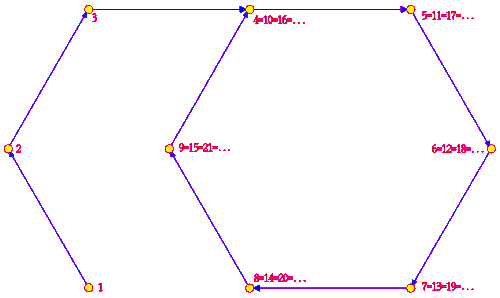|
Monogenic semigroup In mathematics, a monogenic semigroup is a semigroup generated by a single element.[1] Monogenic semigroups are also called cyclic semigroups.[2] StructureThe monogenic semigroup generated by the singleton set {a} is denoted by . The set of elements of is {a, a2, a3, ...}. There are two possibilities for the monogenic semigroup :
In the former case is isomorphic to the semigroup ({1, 2, ...}, +) of natural numbers under addition. In such a case, is an infinite monogenic semigroup and the element a is said to have infinite order. It is sometimes called the free monogenic semigroup because it is also a free semigroup with one generator. In the latter case let m be the smallest positive integer such that am = ax for some positive integer x ≠ m, and let r be smallest positive integer such that am = am+r. The positive integer m is referred to as the index and the positive integer r as the period of the monogenic semigroup . The order of a is defined as m+r−1. The period and the index satisfy the following properties:
The pair (m, r) of positive integers determine the structure of monogenic semigroups. For every pair (m, r) of positive integers, there exists a monogenic semigroup having index m and period r. The monogenic semigroup having index m and period r is denoted by M(m, r). The monogenic semigroup M(1, r) is the cyclic group of order r. The results in this section actually hold for any element a of an arbitrary semigroup and the monogenic subsemigroup it generates. Related notionsA related notion is that of periodic semigroup (also called torsion semigroup), in which every element has finite order (or, equivalently, in which every monogenic subsemigroup is finite). A more general class is that of quasi-periodic semigroups (aka group-bound semigroups or epigroups) in which every element of the semigroup has a power that lies in a subgroup.[5][6] An aperiodic semigroup is one in which every monogenic subsemigroup has a period of 1. See also
References
|
